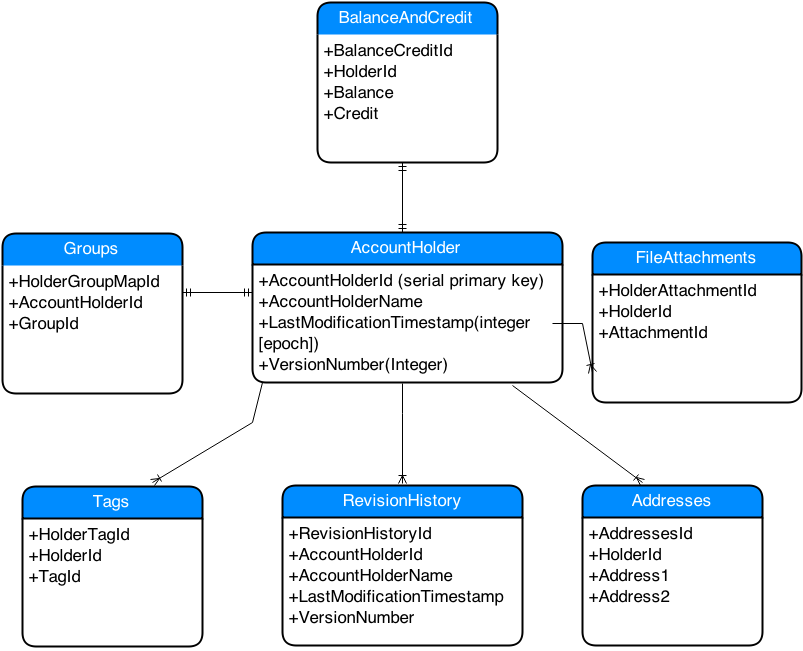ER Diagram

Brief description
The database to be used is postgres.
The database might contain upto 2 million
AccountHolderrecords.Since the
AccountHoldertable is accessed and updated frequentlyautovacuum_vacuum_scale_factorforAccountHoldertable is set to 0.01The application only loads latest 5000 records during startup.
As specified in the ER diagram, an account holder record can have multiple addresses,file attachments,tags and versions(1 to n)
An account holder record is associated with a group and for a given account holder record, there are balance and credit fields (1 to 1)
Since latest records are to be fetched, an index is created on
LastModificationTimestampfield of theAccountHoldertable.While joining tables with 1 to 1 relationship
INNER JOINis used.While joining tables with 1 to n relationship
LEFT OUTER JOINis used.AccountHolderIdinAccountHoldertable is thePRIMARY KEYand this is used as foreign key in other tables.
Keeping the above things in mind, I have designed this query to fetch the latest 5000 account holder records as follows.
SELECT *
FROM
( SELECT *
FROM AccountHolder
ORDER BY LastModificationTimestamp DESC
LIMIT 5000 ) AS AccountHolderRecord
INNER JOIN
Groups ON AccountHolderRecord.AccountHolderId = Groups.AccountHolderId
INNER JOIN
BalanceAndCredit ON AccountHolderRecord.AccountHolderId = BalanceAndCredit.HolderId
LEFT OUTER JOIN
FileAttachments ON AccountHolderRecord.AccountHolderId = FileAttachments.HolderId
LEFT OUTER JOIN
Addresses ON AccountHolderRecord.AccountHolderId = Addresses.HolderId
LEFT OUTER JOIN
RevisionHistory ON AccountHolderRecord.AccountHolderId = RevisionHistory.AccountHolderId
LEFT OUTER JOIN
Tags ON AccountHolderRecord.AccountHolderId = Tags.HolderId
Question I am new to Postgres and SQL joins. I want to know whether this query can be further improved. Are there any additional things that I need to take care of to improve the performance?
